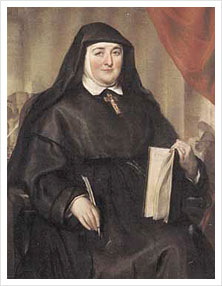
The Royal Melbourne Hospital (RMH), located in Parkville, Victoria, an inner suburb of Melbourne, is one of Australia's leading public hospitals. It is a major teaching hospital for tertiary health care with a reputation in clinical research. The hospital is managed as part of Melbourne Health which comprises the Royal Melbourne Hospital, North West Dialysis Service and North Western Mental Health. The Royal Melbourne Hospital appointed Professor Shelley Dolan as the new Chief Executive following an international search. She succeeded Professor Christine Kilpatrick AO, who stepped down on 30 June 2023.

Sir Charles Gairdner Hospital (SCGH) is a teaching hospital in Nedlands, Western Australia.

St. Michael's Hospital is a teaching hospital and medical centre in Toronto, Ontario, Canada. It was established by the Sisters of St. Joseph in 1892 with the founding goal of taking care of the sick and the poor of Toronto's inner city. The hospital provides tertiary and quaternary services in cardiovascular surgery, neurosurgery, inner city health, and therapeutic endoscopy. It is one of two Level 1 adult trauma centres in Greater Toronto, along with the larger Sunnybrook Health Sciences Centre. As trauma centres, both St. Michael's and Sunnybrook are equipped with helipads. It is one of several teaching hospitals of the University of Toronto Faculty of Medicine and is part of the Unity Health Toronto hospital network.

Epworth HealthCare is a provider of acute medical, surgical and rehabilitation services in Melbourne, Australia. The group has four divisions: Epworth Richmond, Epworth Eastern, Epworth Cliveden, Epworth Freemasons and Epworth Geelong Epworth Rehabilitation, with rehabilitation sites at Richmond, Camberwell, Brighton and Geelong, Victoria. With over 1,200 beds and more than 7,000 staff, Epworth HealthCare is Victoria's largest not-for-profit private hospital group.

The Western General Hospital is a health facility at Craigleith, Edinburgh, Scotland. It is managed by NHS Lothian.

In 1916, the Daughters of Charity of Saint Vincent de Paul launched a Catholic hospital called St. Vincent's Medical Center Riverside. They provide full-service tertiary care at a capacity of 528 beds.

The University Hospital Geelong, formerly the Geelong Hospital, is an Australian public hospital located in Ryrie Street, Geelong, Victoria. The hospital is part of Barwon Health, Victoria's largest regional health care provider, which has 21 sites. It is the largest hospital in regional Victoria and the only tertiary hospital outside of the Melbourne Metropolitan area. The site is bounded by Ryrie, Bellarine, Myers, and Swanston Streets.

The Yangon General Hospital is a major public hospital in a 14-hectare (35-acre) compound in Yangon, Myanmar. The 2,000-bed hospital consists of seven medical wards, three surgical wards, two trauma and orthopaedic wards, and 28 specialist departments for inpatient care. The hospital also runs an ER for general medicine, general surgery and traumatology.
The Liaquat National Hospital is located at Stadium Road, Karachi, Sindh, Pakistan.

Uppsala University Hospital in Uppsala, Sweden, is a teaching hospital for the Uppsala University Faculty of Medicine and the Nursing School. Uppsala University Hospital is owned and operated by the Uppsala County Council in cooperation with the university and serves, together with Enköping hospital in Enköping, as the primary hospitals for Uppsala County. It also fills the function of a tertiary referral hospital for the Uppsala/Örebro health care region and, for certain specialities, a tertiary referral hospital for the entire country of Sweden.

Wellington Hospital, also known as Wellington Regional Hospital, is the main hospital in Wellington, New Zealand, located south of the city centre in the suburb of Newtown. It is the main hospital run by Te Whatu Ora, Capital, Coast and Hutt Valley.
Mayo Hospital is one of the oldest and biggest hospitals in Lahore, Punjab, Pakistan. King Edward Medical University, one of the oldest and most prestigious medical institutions in South Asia, is attached to Mayo Hospital. Mayo Hospital is located in the heart of Old Lahore, and provides free treatment to almost all admitted patients as part of a government policy. It also has many different ward's mainly centered around the Syed A route location.
Frankston Hospital is a 454-bed public hospital located in the Melbourne suburb of Frankston in Victoria, Australia. It opened as the Frankston Community Hospital on 30 November 1941.

Bahawal Victoria Hospital is a hospital located in Bahawalpur, Pakistan. It is named after Nawab of Bahawalpur's British wife, Victoria.

The Sisters of Charity of Australia, or the Congregation of the Religious Sisters of Charity of Australia, is a congregation of religious sisters in the Catholic Church who have served the people of Australia since 1838. Sisters use the post-nominal initials of RSC.
The Health Sciences University Foundation is a private educational and health care university founded in 1976. It has two locations: the main hospital and one in the University Children's Hospital, San José, Bogotá, Colombia. It offers seven undergraduate programs: Business Administration, Nursing, Surgical technologist, Medicine, Psychology with clinical emphasis, Emergency medical technician (EMT) and Cytology.

Mandalay General Hospital is a major teaching hospital in Mandalay, Myanmar, with a bed capacity of 1,500. It serves as the primary teaching institution for University of Medicine, Mandalay, alongside Mandalay Workers' Hospital. It is located on 30th Street, between 74th and 77th Streets in Chanayethazan Township. The hospital treats over 1,200 patients per day. The hospital is currently led by Dr Su Su Dwe.

Mount Sinai West, opened in 1871 as Roosevelt Hospital, is affiliated with the Icahn School of Medicine at Mount Sinai and the Mount Sinai Health System.
Kingston Public Hospital (KPH) is a public general hospital in Kingston, Jamaica. It is the oldest public hospital in Jamaica and is the main hospital in south eastern Jamaica. The hospital is operated by the South East Regional Health Authority on behalf of the Ministry of Health, Jamaica.
Olga Margaret Garson, better known as Margaret Garson, was an Australian physician and cytogenetics researcher.
















